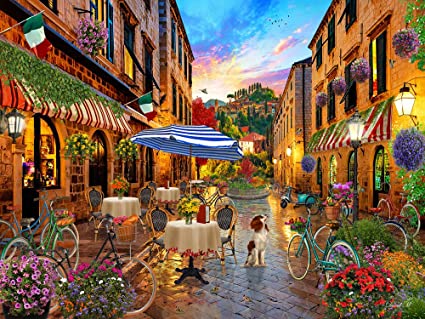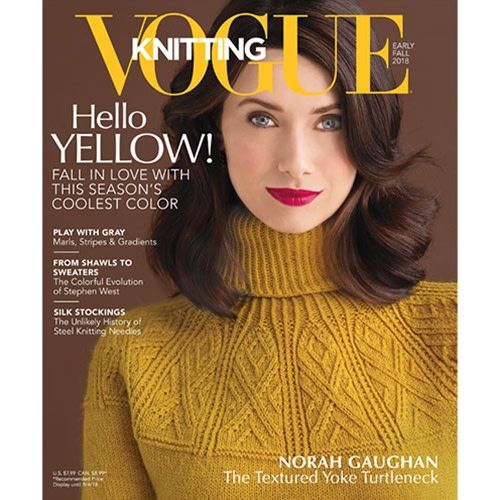
You may have heard the term knitting casting-on. This refers a method of adding new stitches while not relying on what you've already made. It has a lower edge that is independent of the upper one, as its name suggests. The opposite of binding off is casting on. If you've ever knit before you'll know how to create a cast on stitch. You can still learn how to knit if you are a beginner.
Loop cast-on
The knitting loop cast-on technique creates a stitch by drawing the working yarn up from the center of the knitting loop. This method is the most efficient way to add stitches in a knitted project. It is also ideal for making seamless toys and top down mitts. This technique works well when you're working with blankets and shawls with a centre-out design. You can use a loop cast-on with any size needle. Make sure to choose the right size.
The disappearing-loop cast-on is smaller than other methods and has a similar effect to crochet's magic circular. To cast-on a circular piece of yarn, you first need to make a loop from your working yarn. Cross the short end over that at the ball end. If you knit, the loop will disappear. Use your fingers to hold the work yarn. Now you can start knitting. You can now continue to knit your piece.

Cast-on German Twisted
A normal cast-on edge is different from a German Twisted one if you're new to knitting. German twisted casts-ons are knitted with a circular needle. They have a stretchy, curved edge. If you don't follow certain steps, it may be difficult to get the right casting edge. This article will discuss the differences between a German-twisted cast-on edge (or standard) and provide an overview of both.
The German Twisted Cast-On, also known to be the Old Norwegian Cast-on, can be used as an alternative to the longer-tail traditional cast-on. It is slightly stretchier and ideal for projects that call for stretch, such top-down socks. A long-tail caston is the best way to learn how you can do a German-twisted cast-on. To learn how to do it, start by placing the yarn on your needle and holding it in the sling-shot position.
Cast-on for long tails
A long tail knitting casting-on works the same way as a traditional casting-on but is more versatile. It can be used in double and colorwork. This article will discuss the various uses of this method. You will need to be familiar with the basics of knitting before you can start using this method. You'll be able to cast many stitches using this method once you understand how it works.
A long tail-cast-on is the preferred method of knitting. It uses a circular needle that is held with one tip in your right hand. It can be hard to estimate the amount of yarn needed, so take care to measure. One rule of thumb is to make sure you cast three times the width of your project. This should be in addition to 6 inches/15 cm. When calculating how much yarn to use, you should start by counting the stitches you need to cast on.

Cast-on the backward loop
The Backward loop casting-on is a great way to add stitch to the middle of a row. The tail from the yarn closest to your work should be twisted to form a loop (e) at the back of the stitch. Work from the lower right corner to your stitch's upper left corner. Then knit the st just like any other stitch.
A small hole may appear in your knitting after you have made 1 via backward loop casting-on. This is normal. To close the hole, you will need to use working yarn. Backward loop cast-on is a great choice for knitting socks or mittens with an underarm seam. However, it's not a good choice for casting on more than a few stitches because it tends to make the join loose. You can instead replace the backward cast-on with M1 increase.
FAQ
What are competitive hobbies?
Running, swimming, cycling and tennis are all competitive sports.
They're often enjoyed by people who are active and want to socialize.
If your hobby involves physical activity, you will likely find other people who share it.
This could be as simple as joining a sports club where you play regularly together.
Participating in group games, which involve playing alongside others, is another option.
These include: football (soccer), soccer, cricket, netball.
There are many types competition.
Some competitions exist solely for recreational purposes.
Others are designed for competitors to prove their skill.
Other rewards are available to recognize exceptional performance.
In these cases, the winners receive prizes.
Other competitions are designed to test the strength and stamina of competitors.
These are known endurance events.
For example, marathon races, triathlons, Ironman Triathlon, etc.
Athletes often train hard before competing in these events.
They will adhere to a strict training program that prepares them mentally as well as physically.
They may also need to spend some time away from home during preparation.
It's important not to forget that not all athletes are able to compete in every type event.
Can I make a living from my hobby and earn money?
Many hobbies can help you make extra money.
If your hobby is something you love, you might decide to make a living selling it.
You might consider setting up a website to sell rare stamps if you have a collection.
This allows you to make additional income, without having the hassle of actually purchasing and selling stamps.
Another option is to start a YouTube channel in which you discuss your hobby.
This allows for you to share your passions with others and can potentially generate additional income by providing premium content.
How do I find a hobby that interests me?
You might feel as though you don't have a choice when you first start your quest for a hobby.
You may be thinking, "I'm just not artistic" or "I hate sports," or perhaps "I don’t even know what I know."
The truth is that you likely already have a lot experience in your chosen hobby.
It's just not something you're aware of.
Have a look at your home. How much stuff do you own?
Do you have any old toys lying around?
Perhaps you have a collection.
You might have always wanted the ability to cook.
Or maybe you'd really like to start playing guitar again.
Whatever it is, there's likely something you can turn into a hobby.
The secret is to remember that you already have plenty to draw on.
Once you have done that, you will be able choose a hobby that suits your lifestyle.
What are your educational hobbies?
A hobby that teaches you something is called an educational hobby. This could be anything you want, such as playing sports or learning how to play an instruments.
The key thing is that it should be fun and enjoyable for you. You don't necessarily have to do this all the time. But if it becomes boring, then think about what you could be doing.
Also, you need to be careful not to spend too much on these activities. They can end up costing more than you think.
Statistics
- Much of this decline reflects the fact that teens are less likely to work today than in the past; among employed teens, the amount of time spent working is not much different now than it was around 2005. (pewresearch.org)
- Almost 80% of people claim to have no hobby. (hobbylark.com)
- 37% Video Games 36% Travel 36% Health and Fitness (quizexpo.com)
- In comparison, men in the “no humor” condition were refused 84.6% of the time and were only accepted 15.4% of the time. (time.com)
- Studies show that just six minutes of reading can reduce stress levels by 60 percent. (oberlo.com)
External Links
How To
How to Choose the Right Hobby For You
If you ask yourself some questions, you may be able to tell whether your hobby is right for you:
-
Do I enjoy doing it?
-
It gives me pleasure?
-
Do you think it's something I would enjoy doing when I get older?
-
Are I good at it?
-
Are there ways to improve?
-
Would I recommend it?
-
Will it bring you happiness?
-
Do you think it will allow me to relax?
-
Is it going to make me feel better?
-
What skills will I gain from it?
-
Will it let me meet new friends?
-
Will it allow me to express my creativity?
-
Are there any opportunities for me to learn?
-
Is it going to give me the confidence?
-
It will give me a feeling of achievement.
-
Will it lead to financial success?
-
Can it allow me to travel?
-
Will it allow me to explore new places?
-
Will it motivate me to exercise more?
-
Is it going to inspire me?
-
It will motivate me to succeed.
-
What activities will I be required to do?
-
Is it going to challenge me?
-
It could be fun.
-
Is it going to keep me fit?
-
Can it help you save money?
-
Will it decrease stress levels?
-
Will it stop boredom from happening?
-
Do you think it will help me save time?